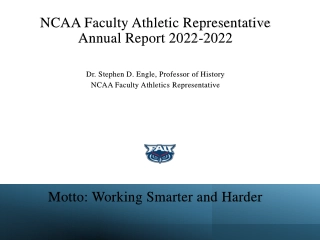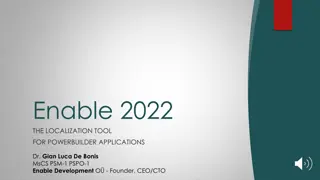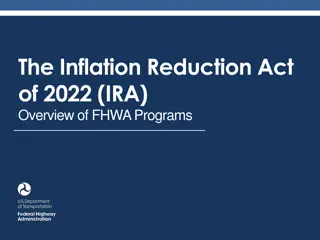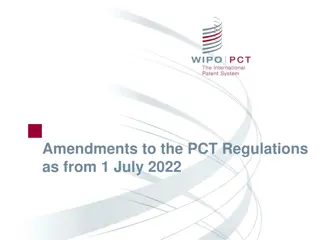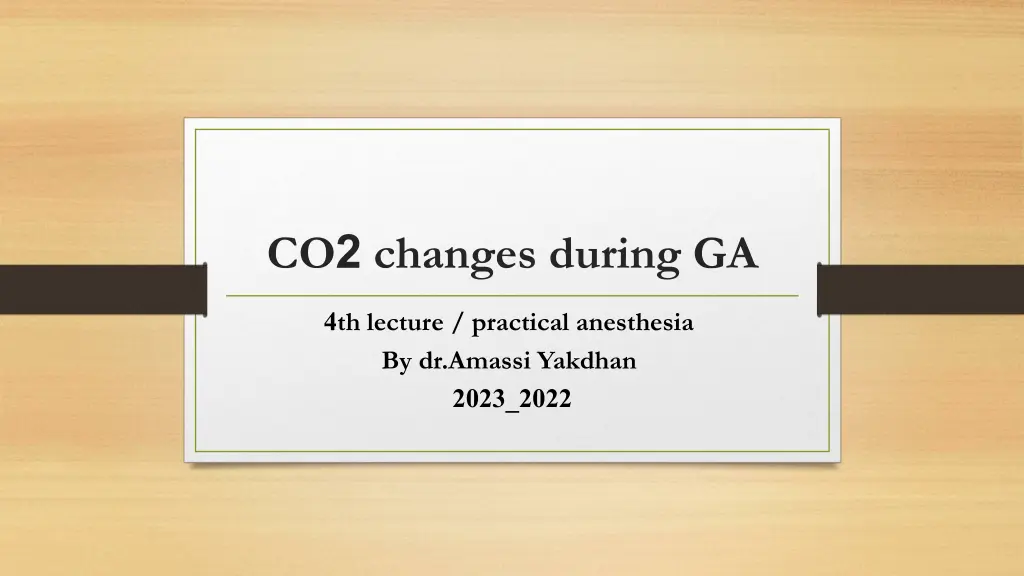
Understanding CO2 Changes During General Anesthesia - Insights from Dr. Amassi Yakdhan
Explore the nuances of CO2 changes during general anesthesia through the lenses of Dr. Amassi Yakdhan's teachings. Gain insights into normal blood values of PaCO2, ETCO2 readings, and the significance of capnography in monitoring patients. Delve into topics such as dead space, capnography indications, and various cases related to anesthesia management. Enhance your understanding of CO2 dynamics during medical procedures and the implications for patient care.
Download Presentation

Please find below an Image/Link to download the presentation.
The content on the website is provided AS IS for your information and personal use only. It may not be sold, licensed, or shared on other websites without obtaining consent from the author. If you encounter any issues during the download, it is possible that the publisher has removed the file from their server.
You are allowed to download the files provided on this website for personal or commercial use, subject to the condition that they are used lawfully. All files are the property of their respective owners.
The content on the website is provided AS IS for your information and personal use only. It may not be sold, licensed, or shared on other websites without obtaining consent from the author.
E N D
Presentation Transcript
CO2 changes during GA 4th lecture / practical anesthesia By dr.Amassi Yakdhan _ 2023 2022
Common tricks Normal blood value of PaCO2 = 35- 45 mmHg by ABG Normal reading in capnography PaCO2 = 30 43 mmHg . ETCO2 or It s the 1rst alarm to the changes before Pulse O2 & ECG . CO2 travelling : Metabolism ventilation Transport
ETCO2 reading changes malignant hyperthermia C.O.P minute ventilation Drugs of tx bronchospasm Bicarbonate infusion Tourniquet release ETCO2 = muscular activity ETCO2 = muscular activity relaxant . Hypothermia C.O.P minute ventilation Bronchospasm as muscle
Dead space Total dead space anatomical alveolar mechanical . . Aiways till alveoli Ventilated not perfusion Artificial air way circut
Capnography indications ETT accurancy Disconnection or obstruction of circuit Rebreathing Hypoventilation Adjustment of muscle relaxant Adjustment of mechanical ventilator parameters Complication that cause CO2 production : Pulmonary edema Pulmonary embolism Airway disease ( asthma , COPD ) . estimate C.O.P & CPR accurancy . or
Cases Apnea Air way obstruction dislodge to esophagus Air way disconnection C.V.S collapse Death .
Cases Base line elevated Causes of rebreathing : Malfunction CO2 absorber Inadequate inspiratory flow In sufficient expiratory flow Faulty expiratory flow rebreathing
Cases Notch sign : muscle relaxant start to fade away .
Cases Obstruction : ETT occlude , kinking , obstruction Circuit obstruction Bronchospasm
Cases Hyper ventilation Or ETCO2 Causes : RR TV BMR Hypothermia
Cases Hypoventilation Or Causes : RR TV BMR Hyperthermia ETCO2
Cases Inadequate seal around : ETT deflate , leakage or too small to the airway .
Cases Esophageal tube has little or no amount of CO2 . ETCO2 is the 1rst indicator for esophageal intubation. esophagus


